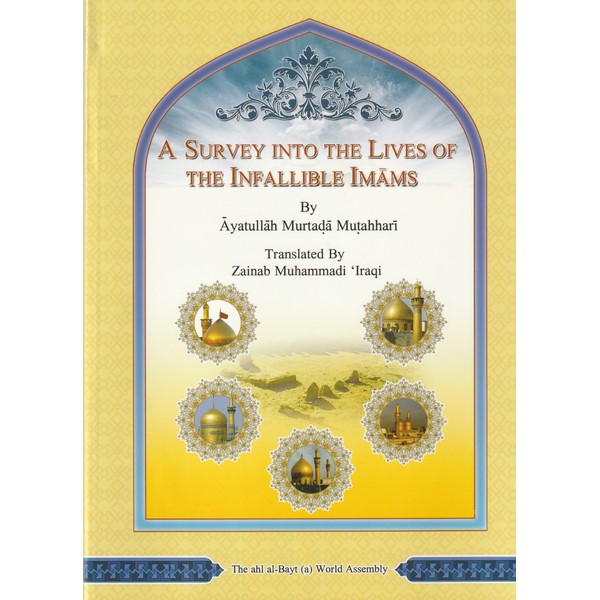| Content | The book starts by tracing the ancestors of Imam Husein (as) and Yazeed, the two principal figures involved in the tragedy of Karbala. The family tree of Imam Husein (as) is looked at in detail, with particular reference to those who are connected with the tragedy of Karbala.
The book then explores systematically the regional, political and religious developments during the time of the Holy Prophet and the succeeding leaders, Leader Abu Bakr, Leader Umar, Leader Othman and Imam Ali (as).
The circumstances leading to, and the content of, the political settlement between Imam Hasan (as) and Muawiya are explained. This is then followed by an account of the methods used by Muawiya to ensure his son Yazeed succeeds him as the leader of the Muslims.
The text then goes on to examine the situation when Yazeed comes to power. His demand for personal allegiance of Imam Husein (as) sparks off a chain of events that finally lead to the tragedy of Karbala. These events, from Madinah to Makkah to Kufa and finally to Karbala are elaborated upon step by step.
The activities of the days spent in Karbala are discussed and a full description is given of exactly what happened on the day of Ashura. The trials and tribulations experienced by the survivors of Karbala in Kufa and Damascus are outlined. Finally, the book ends with an analysis of who won the campaign and an overview of events that bring about the downfall of the Umayyas.
HEAVILY SUBSIDIZED BY IEB OF WORLD-FEDERATION | This book is a translation from French thesis published by The Research Committee of Strasbourg, France, about the contribution made by Imam Jafar as-Sadiq (as) to science, philosophy, literature and irfan (Gnosticism)
Heavily subsidized by www.wabil.com
NOT TO BE RESOLD AT HIGHER PRICE | Principles of good governance in the letter of Ali to al-Ashtar refers to a set of instructions and advice for rulers, reputedly addressed at Malik al-Ashtar (d. 657), the Arab military commander and an ardent supporter of Ali ibn Abi Talib (d. 661), who was the fourth Rashidun caliph (r. 656–661), the first Shia imam, and the cousin and son-in-law of the Islamic prophet Muhammad. The letter is attributed to Ali and outlines his conception of just and righteous governance, following the appointment of al-Ashtar as the new governor of Egypt circa 657 CE. Among the earliest extant records about Islamic rule, the letter has received considerable attention throughout the Muslim history as a blueprint for Islamic governance. The theme of the letter can be summarized as justice and compassion for all, regardless of class, creed, and color. Malik was killed en route to Egypt to assume his new post at the instigation of Mu'awiya, the archenemy of Ali.
HEAVILY SUBSIDIZED BY WWW.ISLAMICTHOUGHT.CO.UK | This text provides a good analysis of the lives of the Infallible Imams while presenting the different methods, struggles, and circumstances of each Imam and how they may have acted similarly or differently. However they have all acted as Allah (SWT) desired of them spreading Islam in the social circumstances they lived, as well as the practice of Taqiyyah where necessary.
HEAVILY SUBSIDIZED BY WWW.ISLAMICTHOUGHT.CO.UK | Class 3 Fiqh by Majlis-e-Ulama Shia folder is used by most centres in UK. Topics covered (1) Furoo e deen (2) Concept of sin (3) Islamic terminology (4) Wudhu (5) Adhaan & Iqaamah (6) Salaah (7) Zakaat (8) Khumus (9) Hijaab (10) Ramadhan (11) Hajj. One of the best best Madressa available in English.
HEAVILY SUBSIDIZED BY WWW.ISLAMICTHOUGHT.CO.UK | This book Shi`ah Advanced Seminary Its Phases, development and characteristics, takes you through a journey how the Hawza system work. Topics covered 1 History of two Hawzahs 2 Style 3 Hawzah flexibility 4 Political independence 5 Economic independence 6 spiritual independence 7 First to third phase 8 Powerful education system
HEAVILY SUBSIDIZED BY WWW.ISLAMICTHOUGHT.CO.UK
|












Reviews
There are no reviews yet.